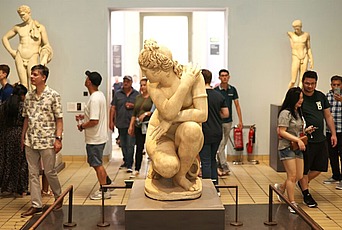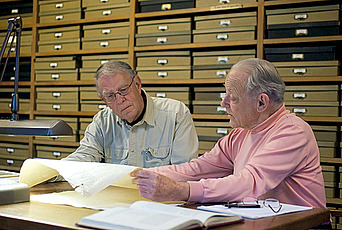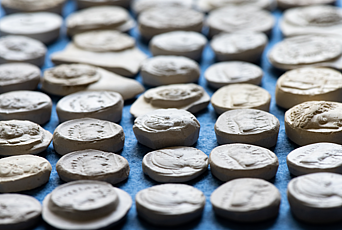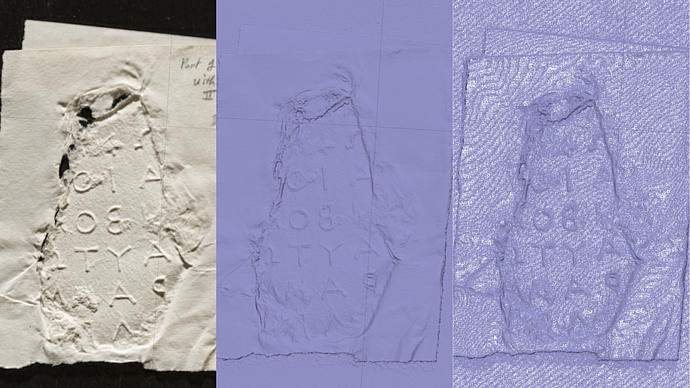
IAS Squeeze Digitization Project Unlocking the Text of Ancient Inscriptions
The Institute for Advanced Study’s Krateros Project is launching a new, exploratory effort to further unlock the text of ancient Greek inscriptions using its collection of epigraphic squeezes.
Epigraphic squeezes are three-dimensional paper impressions taken from the surface of ancient Greek and Latin texts that are inscribed into hard materials such as stone. The Institute’s collection, which is one of the largest in the world, contains approximately 30,000 squeezes of inscriptions that span various facets of political, social, economic, religious, legal, and cultural life from approximately 400 B.C.E.–400 C.E.
The squeezes are highly accurate reproductions and are an immensely useful tool for historians because they allow scholars to study large numbers of inscribed texts quickly and easily. The original stones can often be scattered in different museums across the globe, so collecting inscriptions in one place using squeezes makes research a great deal easier. Additionally, many squeezes preserve inscriptions which have been destroyed or lost.
Since 2018, the Krateros Project has been tasked with making the Institute’s squeezes even more useful for scholars. Their work is focused on digitizing the collection, scanning each squeeze in two dimensions using a flatbed scanner, and in three dimensions using a custom-built rig to create an open-access repository for the collection online. “The ongoing work truly democratizes the Institute’s squeezes, enabling not only scholars in Princeton but from all over the world to learn from these fascinating documents,” says Angelos Chaniotis, Professor in the School of Historical Studies.
In the past, the Krateros Project has received support from a number of sources, including the National Endowment for the Humanities (NEH), gifts in memory of Fowler Merle-Smith, and The Charles and Lisa Simonyi Fund for Arts and Sciences. In January 2024, NEH awarded the Institute for Advanced Study a further Digital Humanities Advancement Grant of $75,000 to support the Project's latest endeavor, which will utilize optical character recognition (OCR) technology.
OCR has long been applied with increasing levels of accuracy to printed texts, allowing for readable and searchable editions to be created for huge corpora of documents. More recently, spurred by advances in neural networks and increases in processing capability, OCR has also been used successfully on manuscript texts. The Krateros Project aims to expand this use even further, developing OCR methods for analyzing Greek inscriptions preserved on squeezes.
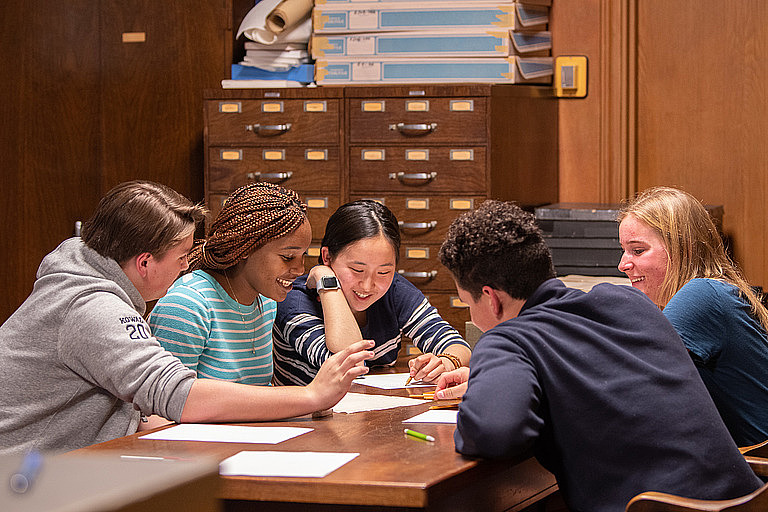
“This technology has the potential to greatly accelerate the publication of new analyses of historic Greek texts,” explains Aaron Hershkowitz, the Krateros Project Manager. “Crucially, it will also draw critical attention to problem spots in existing transcriptions and could even identify individual stonecutters’ handwriting. This innovative approach to humanities research will lay the groundwork for breakthrough discoveries that could transform our understanding of ancient history.” Hershkowitz is co-directing these new efforts alongside Nicholas Howe, Professor of Computer Science at Smith College, Massachusetts.
The study of ancient Greek and Roman texts has been an important part of the work of the Institute’s School of Historical Studies since 1935, when classical scholar and epigrapher Benjamin Dean Meritt was appointed as Professor. Immediately following his arrival at IAS, Meritt set about founding a squeeze library to support his research on inscriptions from the Agora (marketplace) of ancient Athens. Thanks to funding provided by the Institute, Meritt commissioned squeezes to be made from inscriptions mainly in Athens’s Epigraphical Museum.
The IAS collection has been further augmented by gifts from some of the greatest epigraphers of the twentieth century, including Charles Edson (Member 1952–53, 1962–63), who donated squeezes from Macedonia; Louis and Jeanne Robert (Visitor 1989–90), who gave squeezes from Asia Minor; David M. Robinson, who donated further squeezes from Asia Minor and his collection from Olynthus; and, more recently, Kevin Clinton (Member 1987–88, 1999–2000 and Visitor 2009), who gifted examples from Eleusis.
To learn more about the project, visit the Krateros Project website.
